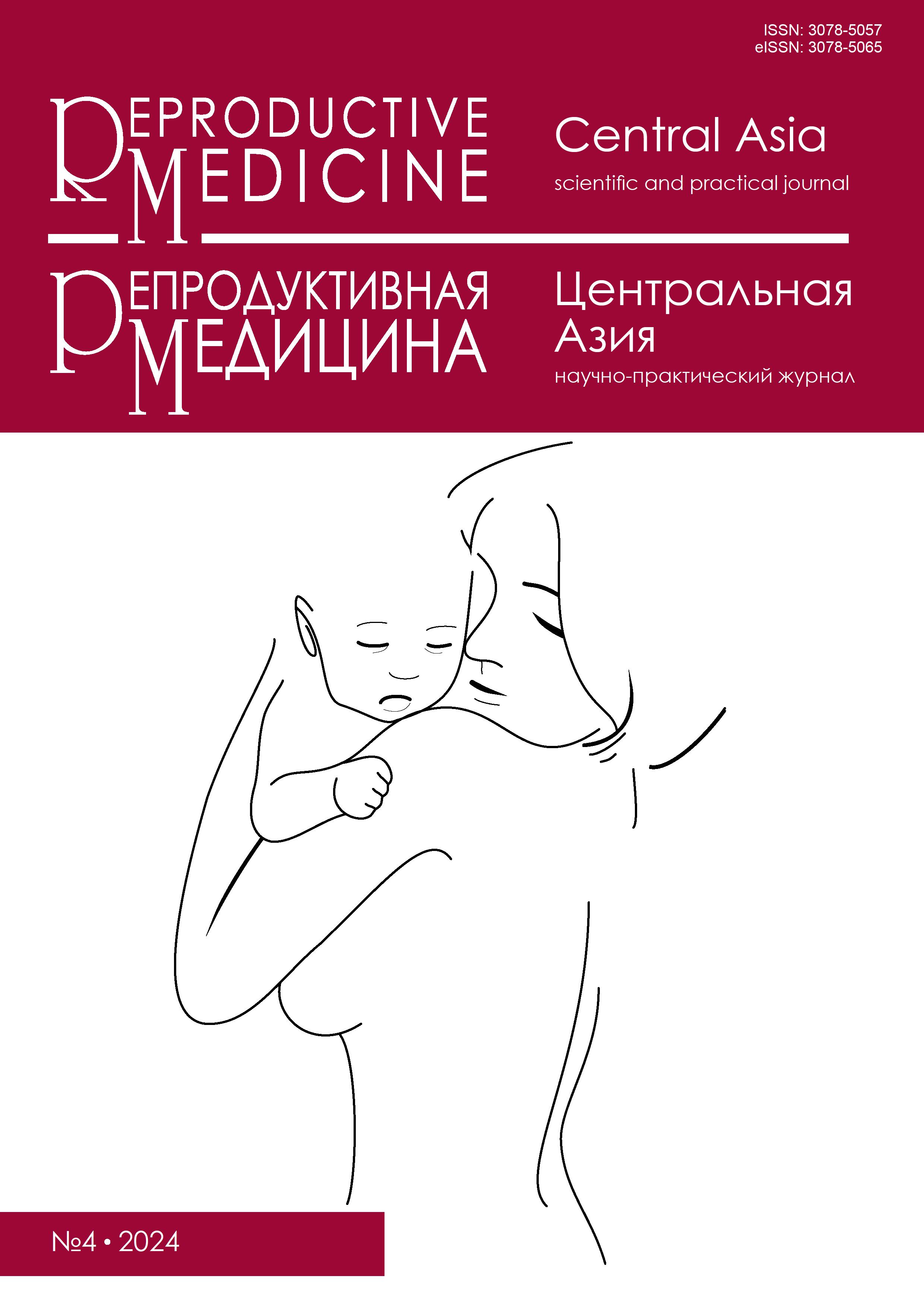Medical and social problems of women in places of imprisonment: A literature review
DOI:
https://doi.org/10.37800/RM.4.2024.411Keywords:
health, women prisoners, prison, mortality, medical careAbstract
Relevance: Each year, the number of women in detention facilities continues to rise globally. Despite having the same rights as men, the penal enforcement system is predominantly designed with men in mind. As a result, these institutions often fail to provide adequate conditions to safeguard women's rights and promote their health.
The study aimed to summarize the available literature on the medical and social problems of women in places of detention.
Materials and Methods: An analytical review of open-access literature sources from scientific databases PubMed/Medline, Scopus, Web of Science, and e-library over the past 10 years (2014-2024) was conducted.
Results: This literature review has identified women’s leading medical and social problems and needs in places of detention. The unfavorable conditions in prison facilities significantly impact the health of women prisoners. Chronic illnesses, infectious diseases, and mental health disorders linked to substance abuse are notably prevalent among incarcerated women. Moreover, they face a heightened risk of physical and sexual violence compared to women in the general population. Most of the imprisoned women are parents and are of reproductive age, which increases the need for quality reproductive health care from healthcare.
Conclusion: This review determined the medical and social status of women in places of detention, revealed the conditions of prisoners’ detention, and revealed the lack of high-quality medical care. Our findings highlight the need for preventive programs aimed at improving the health of incarcerated women and enhancing the training of medical professionals. These measures are essential for addressing the specific health needs of women in prison settings effectively.
References
Hyatt JM, Andersen SN, Van Tiem B. Perceptions of incarcerated people: prison conditions, public health, and justice in the United States. J Public Health Policy. 2024;45(3):446-459.
https://doi.org/10.1057/s41271-024-00496-z
Calles-Rubiales N, Ibáñez Del Prado C. Influence of prisoners' mental health on the relational climate of prisons. Rev Esp Sanid Penit. 2020;22(3):116-125.
https://doi.org/10.18176/resp.00021.
Bright AM, Higgins A, Grealish A. Women's experiences of prison-based mental healthcare: a systematic review of qualitative literature. Int J Prison Health. 2022;19(2):181-198.
https://doi.org/10.1108/IJPH-09-2021-0091.
Belli G, Romão ME, Lacquagni R, Bertoglio B, Bertolotti A, Tamellini G, Morini L, Javan GT, Setti I, Visonà SD. Deaths in jail: a retrospective analysis of autopsies performed at the Legal Medicine Unit of Pavia (1999-2022). Front Psychiatry. 2024;15:1423325.
https://doi.org/10.3389/fpsyt.2024.1423325.
The World Prison Brief online database. 2024:1-3.
https://www.prisonstudies.org/highest-to-lowest/female-prisoners (accessed 02 September 2024).
Искандаров РР, Кулавский ЕВ. Актуальные проблемы охраны здоровья женщин в пенитенциарных условиях. Уголовно-исполнительная система: право, экономика, управление. 2024:4:30-33. Iskandarov RR, Kulavskij EV. Current problems of protecting women's health in penitentiary conditions. Ugolovno-ispolnitel'naya sistema: pravo, e'konomika, upravlenie. 2024:4:30-33. (in Russ.)
https://doi.org/10.18572/2072-4438-2024-4-30-33
Carter A, Butler A, Willoughby M, Janca E, Kinner SA, Southalan L, Fazel S, Borschmann R. Interventions to reduce suicidal thoughts and behaviors among people in contact with the criminal justice system: A global systematic review. E Clinical Medicine. 2022;14(44):101266.
https://doi.org/10.1016/j.eclinm.2021.101266
Van Hout MC, Mhlanga-Gunda R. Mankind owes to the child the best that it has to give': prison conditions and the health situation and rights of children incarcerated with their mothers in sub-Saharan African prisons. BMC Int Health Hum Rights. 2019;19(1):13.
https://doi.org/10.1186/s12914-019-0194-6.
Alves J, Maia A, Teixeira F. Health conditions before imprisonment and the impact of prison on health: views of detained women. Qual Health Res. 2016;26(6):782-792.
https://doi.org/10.1177/1049732315617217.
UNODC, Prison Matters 2024: Global Prison Population and Trends; A Focus on Rehabilitation. United Nations. 2024:1-52.
https://www.unodc.org/documents/data-and-analysis/briefs/Prison_brief_2024.pdf (accessed 11 November 2024)
UN General Assembly, United Nations Standard Minimum Rules for the Treatment of Prisoners (the Nelson Mandela Rules): resolution/adopted by the General Assembly, A/RES/70/175, January 8, 2016.
https://www.refworld.org/legal/resolution/unga/2016/en/119111 (accessed 16 September 2024)
Alirezaei S, Roudsari RL. Promoting health care for pregnant women in prison: a review of International Guidelines. Iran J Nurs Midwifery Res. 2020:25(2):91-101.
https://doi.org/10.4103/ijnmr.IJNMR_169_19
Volkov BB, Pulley C, Shlafer R. Addressing health disparities in the criminal legal system: Translational benefits, challenges, and facilitators of impactful research with incarcerated pregnant women. J Clin Transl Sci. 2023:7(1):e112.
https://doi.org/10.1017/cts.2023.528
Cloud DH, Garcia-Grossman IR, Armstrong A. Williams B. Public health and prisons: priorities in the age of mass incarceration. Annu Rev Public Health. 2023:44:407-428.
https://doi.org/10.1146/annurev-publhealth-071521-034016
Kerryn E. Bell. Violence in places of deprivation of liberty and the intersectionality of factors of race/nationality and gender. Current problems of economics and law. 2018:12(1):132–148.
http://doi.org/10.21202/1993-047X.12.2018.1.132-148.
Leal M, Kerr L, Mota RMS, da Justa Pires Neto R, Seal D, Kendall C. Differences in non-communicable diseases between women in prison and the general population in Brazil. Sci Rep. 2023:13(1):18782.
https://doi.org/10.1038/s41598-023-46045-8.
American College of Obstetricians and Gynecologists' Committee on Practice Bulletins—Obstetrics. ACOG Practice Bulletin No. 729. Obstet Gynecol. 2018:131:43-48.
https://www.acog.org/clinical/clinical-guidance/practice-bulletin
South AM, Haber LA, Berk J. Hospitalization through the lens of incarceration. J Gen Intern Med. 2024:39:1905-1909.
https://doi.org/10.1007/s11606-024-08805-8.
Bonato PPQ, Ventura CAA, Maulide Cane R, Craveiro I. Health education initiatives for people who have experienced prison: a narrative review. Healthcare (Basel). 2024:12(2):274.
https://doi.org/10.3390/healthcare12020274
Munday D, Leaman J, O'Moore É, Plugge E. The prevalence of non-communicable disease in older people in prison: a systematic review and meta-analysis. Age Ageing. 2019:48(2):204-212.
https://doi.org/10.1093/ageing/afy186
Barnert E, Kwan A, Williams B. Ten urgent priorities based on lessons learned from over a half million known COVID-19 cases in US prisons. Am J Public Health. 2021:111(6):1099-1105.
https://doi.10.2105/AJPH.2021.306221
Lambert LA, Armstrong LR, Lobato MN, Ho C, France AM, Haddad MB. Tuberculosis in jails and prisons: United States, 2002-2013. Am J Public Health. 2016:106(12):2231-2237.
https://doi/10.2105/AJPH.2016.303423.
Altice FL, Azbel L, Stone J, Brooks-Pollock E, Smyrnov P, Dvoriak S, Taxman FS, El-Bassel N, Martin NK, Booth R, Stöver H, Dolan K, Vickerman P. The perfect storm: incarceration and the high-risk environment perpetuating transmission of HIV, hepatitis C virus, and tuberculosis in Eastern Europe and Central Asia. Lancet. 2016;388(10050):1228-1248.
https://doi/10.1016/S0140-6736(16)30856-X
Kerr L, Smith DG, Kendall C, Leal M, Maia Macena RH, Mota RMS, de Almeida RLF. HIV testing inside Brazilian female prisons: results of a national survey. AIDS Care. 2023:35(6):841-849.
https://doi/10.1080/09540121.2022.2119469
Favril L, Rich JD, Hard J, Fazel S. Mental and physical health morbidity among people in prisons: an umbrella review. Lancet Public Health. 2024:9(4):250-260.
https://doi.org/10.1016/S2468-2667(24)00023-9
Ильина СЕ. Психологическое отношение женщин к изоляции в период отбывания наказания в виде лишения свободы. Бюллетень науки и практики. 2019;5(7):332-336.
Il'ina SE. The psychological attitude of women to isolation during the period of serving a sentence of imprisonment. Byulleten' nauki i praktiki. 2019;5(7):332-336. (in Russ.)
https://doi/10.33619/2414-2948/44/43
D'Orta I, Weber K, Herrmann FR, Giannakopoulos P. Women in acute forensic psychiatric care: comparison of clinical, sociodemographic, and detention-related characteristics in pretrial detention, sentence execution, and court-ordered treatment. BMC Psychiatry. 2024: 24(1):94.
https://doi.org/10.1186/s12888-024-05546-0
Karlsson ME, Zielinski MJ. Sexual victimization and mental illness prevalence rates among incarcerated women: a literature review. Trauma Violence Abuse. 2020:21(2):326-349. https://doi.org/10.1177/1524838018767933.
Jewkes Y, Jordan M, Wright S, Bendelow G. Designing 'Healthy' prisons for women: incorporating trauma-informed care and practice (TICP) into prison planning and design. Int J Environ Res Public Health. 2019:16(20):3818.
https://doi.org/10.3390/ijerph16203818
Jones RM, Patel K, Simpson AIF. Assessment of need for inpatient treatment for mental disorder among female prisoners: a cross-sectional study of provincially detained women in Ontario. BMC Psychiatry. 2019:19(1):98.
https://doi.org/10.1186/s12888-019-2083-x
Ray B, Grommon E, Buchanan V, Brown B, Watson DP. Access to recovery and recidivism among former prison inmates. Int J Offender Ther Comp Criminol. 2017:61(8):874-893.
https://doi.org/10.1177/0306624X15606688
Fazel S, Yoon IA, Hayes AJ. Substance use disorders in prisoners: an updated systematic review and meta-regression analysis in recently incarcerated men and women. Addiction. 2017:112(10):1725-1739.
https://doi.org/10.1111/add.13877
Bello JK, Hearing C, Salas J, Weinstock J, Linhorst D. Trends in substance use by gender among participants in a jail-based substance use disorder treatment program: 1998-2016. J Forensic Sci. 2020:65(1):97-102.
https://doi.org/10.1111/1556-4029.14153
Sufrin C, Beal L, Clarke J, Jones R, Mosher WD. Pregnancy outcomes in US prisons, 2016-2017. Am J Public Health. 2019:109(5):799-805.
https://doi.org/10.2105/AJPH.2019.305006
Sufrin CB, Knittel A. Health care and social justice implications of incarceration for pregnant people who use drugs. Int Rev Psychiatry. 2021:33(6):557-571.
https://doi.org/10.1080/09540261.2021.1887097
Bard E, Knight M, Plugge E. Perinatal health care services for imprisoned pregnant women and associated outcomes: a systematic review. BMC Pregnancy Childbirth. 2016:16(1):285. https://doi.org/10.1186/s12884-016-1080-z
Kotlar B, Kornrich R, Deneen M. Meeting incarcerated women’s needs for pregnancy‐related and postpartum services: challenges and opportunities. Perspect Sex Reprod Health. 2015:47(4):221‐225.
https://doi.org./10.1363/47e3315
Shlafer R, Saunders JB, Boraas CM, Kozhimannil KB, Mazumder N, Freese R. Maternal and neonatal outcomes among incarcerated women who gave birth in custody. Birth. 2021:48(1):122-131.
https://doi.org/10.1111/birt.12524
Kirubarajan A, Tsang J, Dong S, Hui J, Sreeram P, Mohmand Z, Leung S, Ceccacci A, Sobel M. Pregnancy and childbirth during incarceration: a qualitative systematic review of lived experiences. BJOG. 2022:129(9):1460-1472.
https://doi.org/10.1111/1471-0528.17137
Hendricks CA, Rajagopal KM, Sufrin CB, Kramer C, Jiménez MC. Mental health, chronic and infectious conditions among pregnant persons in US state prisons and local jails 2016-2017. Womens Health (Lond). 2024:20:17455057241228748.
https://doi.org/10.1177/17455057241228748
American College of Obstetricians and Gynecologists' Committee on Practice Bulletins—Obstetrics. ACOG Practice Bulletin No. 201: Pregestational Diabetes Mellitus. Obstet Gynecol. 2018:132(6):228-248.
https://doi.org/10.1097/AOG.0000000000002960
Huss-Bawab J, Fishbein GA, Fishbein MC. Role of the cardiac pathologist in evaluating Sudden Natural Deaths. Academic Press, USA. 2018:23:139–191.
https://doi.org/10.1016/B978-0-12-813818-2.00008-9
Zhong S, Senior M, Yu R, Perry A, Hawton K, Shaw J, Fazel S. Risk factors for prison suicide: a systematic review and meta-analysis. Lancet Public Health. 2021:6(3):164-174.
https://doi.org/10.1016/S2468-2667(20)30233-4
Fazel S, Ramesh T, Hawton K. Suicide in prisons: an international study of prevalence and contributory factors. Lancet Psychiatry. 2017:4(12):946-952.
https://doi.org/10.1016/S2215-0366(17)30430-3
Rajagopal K, Landis-Lewis D, Haven K, Sufrin C. Reproductive health care for incarcerated people: advancing health equity in inequitable settings. Clin Obstet Gynecol. 2023:66(1):73-85. https://doi.org/10.1097/GRF.0000000000000746
Oliveira TMP, Santos JAD, Aquino PS, Jorge HMF. Labor and childbirth care for women deprived of liberty: a scoping review. Rev Esc Enferm USP. 2024;58:e20240035.
https://doi.org/10.1590/1980-220X-REEUSP-2024-0035en
Routh D, Simmons R, Sanders J, Gero A, Tanner HA, Turok DK. Building an implementation framework to address unmet contraceptive care needs in a carceral setting: a systematic review. Health Justice. 2023;11(1):43.
https://doi.org/10.1186/s40352-023-00243-8
Jakobowitz S, Bebbington P, McKenzie N, Iveson R, Duffield G, Kerr M, Killaspy H. Assessing needs for psychiatric treatment in prisoners: 2. Met and unmet need. Soc Psychiatry Psychiatr Epidemiol. 2017;52(2):231-240.
https://doi.org/10.1007/s00127-016-1313-5
Solomon OJ, Nwankwoala R, Ushi V. The plight of female prisoners in Nigeria and the dilemma of health rights violations. Asian J Soc Sci Humanit. 2014;3:152-161.
http://ajssh.leena-luna.co.jp/AJSSHPDFs/Vol.3(4)/AJSSH2014(3.4-14).pdf
Nyblade L, Stockton MA, Giger K, Bond V, Ekstrand ML, Lean RM, Mitchell EMH., Nelson RE, Sapag JC. Stigma in healthcare settings: why it matters and how we can change it. BMC Med. 2019;17(1):25.
Downloads
Published
How to Cite
Issue
Section
License
Copyright (c) 2024 The rights to a manuscript accepted for publication are transferred to the Journal Publisher. When reprinting all or part of the material, the author must refer to the primary publication in this journal.

This work is licensed under a Creative Commons Attribution-NonCommercial-NoDerivatives 4.0 International License.
The articles published in this Journal are licensed under the CC BY-NC-ND 4.0 (Creative Commons Attribution – Non-Commercial – No Derivatives 4.0 International) license, which provides for their non-commercial use only. Under this license, users have the right to copy and distribute the material in copyright but are not permitted to modify or use it for commercial purposes. Full details on the licensing are available at https://creativecommons.org/licenses/by-nc-nd/4.0/.





